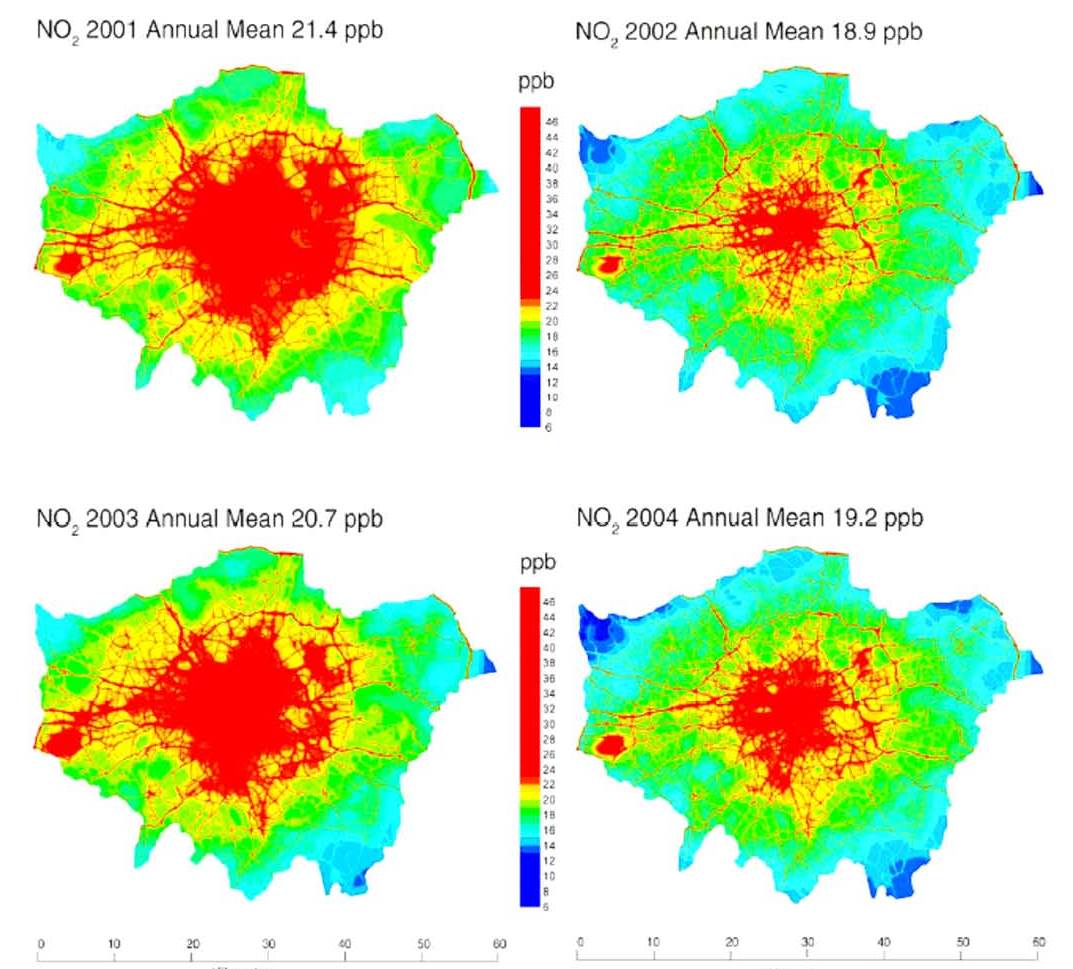Also discussed here: No air quality benefit from London's traffic levy (Reuters, Apr. 27, 2011)
The focus of today’s review is an analysis of the changes resulting from the implementation of the Congestion Charging Scheme in London, using modelling and ground measurements. The results seem to point to little significant change in local air quality which may have been masked by other measures taken to reduce traffic congestion which did improve.


Key Quotes:
“Within the CCZ [Congestion Charging Zone], the investigators projected a net decline of 1.7 ppb in the annual average mean NOx concentration and a decline of 0.8 μg/m3 in PM10”
“the area covered by the CCS [Conjestion Charging Scheme]— approximately 1.4% of Greater London — was likely too small to influence air pollutant levels substantially either within or outside the zone”
"air pollution does not know precise boundaries so any benefit of the CCS or air quality appears to have been lost in the larger regional pollution mix,"
“London's congestion charge was a world leading traffic intervention and ..would be of use to other administrations considering introducing traffic management schemes so that they can achieve vehicle reductions as well as improving air quality at the same time."
“other changes, such as increased used of diesel-powered taxi and bus trips to transport people in and out of the congestion charge zone, may have offset any benefits.”
“Finally, their experience highlights the challenges of using existing monitoring networks, even one as well-established as the LAQN, for the purposes of measuring small changes in air quality”
“the most interesting result was the modest suggestion that metals that have been associated with tire and brake wear might contribute to the oxidative activity levels observed.”
Related articles
- Impact of London Congestion Charge Scheme on Air Pollution (pollutionfreecities.blogspot.com)
- An Urban Air Pollution Simulator (pollutionfreecities.blogspot.com)
- Modelling Exposure to Health Risks from Air Pollution (pollutionfreecities.blogspot.com)
- Polluted Air and Poor Health in UK Cities (pollutionfree.wordpress.com)
- The Impact of Pedestrian Zones on Urban Air Quality (pollutionfreecities.blogspot.com)
- How can we clean up London's air? (guardian.co.uk)

No comments:
Post a Comment